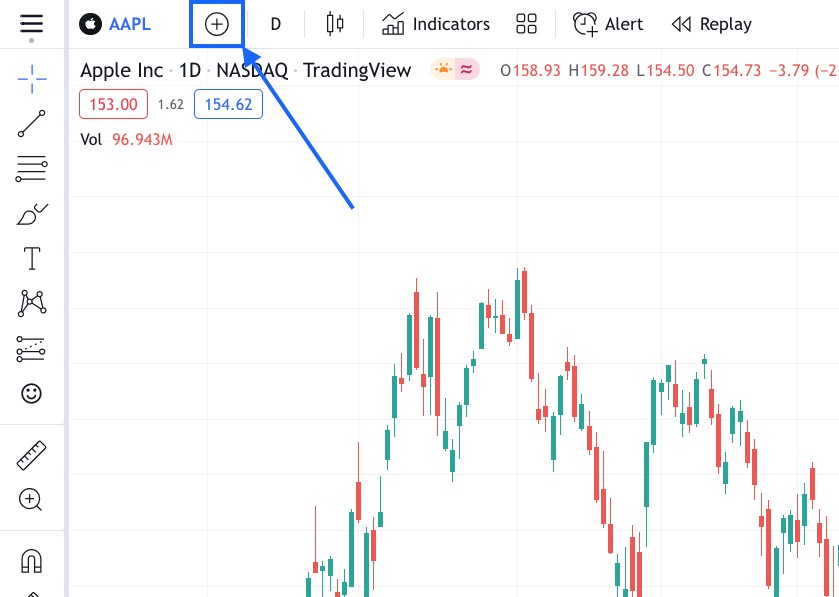Comparing charts in TradingView allows traders to analyze the relative performance of different assets. This guide explains how to compare two or more charts in TradingView to identify market trends, sector performance, and potential trading opportunities.
Why Compare Charts?
Comparing charts provides valuable insights for traders by:
- Assessing Market Health: Comparing broad market indices like the S&P 500 (SPY), Dow Jones (DIA), and Nasdaq (QQQ) helps visualize overall market trends and relative strength.
- Analyzing Sector Performance: Comparing companies within the same sector, such as two automotive stocks like General Motors (GM) and Ford (F), reveals sector-specific trends and highlights outperforming or underperforming companies.
- Identifying Trading Opportunities: Comparing related assets can reveal divergences or correlations that signal potential trading opportunities.
Understanding Percentage Scaling
When comparing charts in TradingView, the vertical axis automatically changes from price to percentage. This percentage represents the price movement for the visible period on the chart. This normalization is crucial because it allows for a clear visual comparison of assets with vastly different price levels. Attempting to compare raw price data of significantly disparate assets would result in a flattened, uninformative chart. For instance, comparing Google (GOOGL) and Apple (AAPL) using price, with their substantial price difference, would obscure the comparative price movements.
Comparing Charts in TradingView: A Step-by-Step Guide
Adding a comparison to your current chart in TradingView is straightforward:
- Locate the Compare Button: Click the “Compare” or “Add Symbol” button (a plus sign icon) in the toolbar at the top of the chart.
- Select or Search for a Symbol: A list of popular symbols is provided for quick selection. To compare a symbol not listed, type it into the search box. Hover over the search result and click the “Same % scale” option.
Conclusion
Comparing charts in TradingView is a powerful tool for technical analysis. By understanding percentage scaling and utilizing the comparison feature, traders can gain valuable insights into market trends, sector performance, and individual asset behavior. This information is essential for making informed trading decisions.

